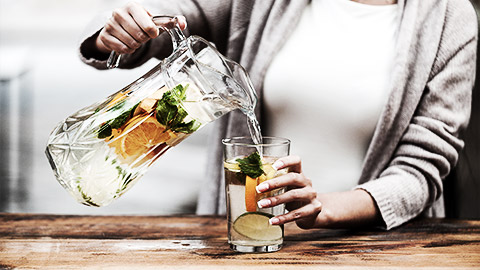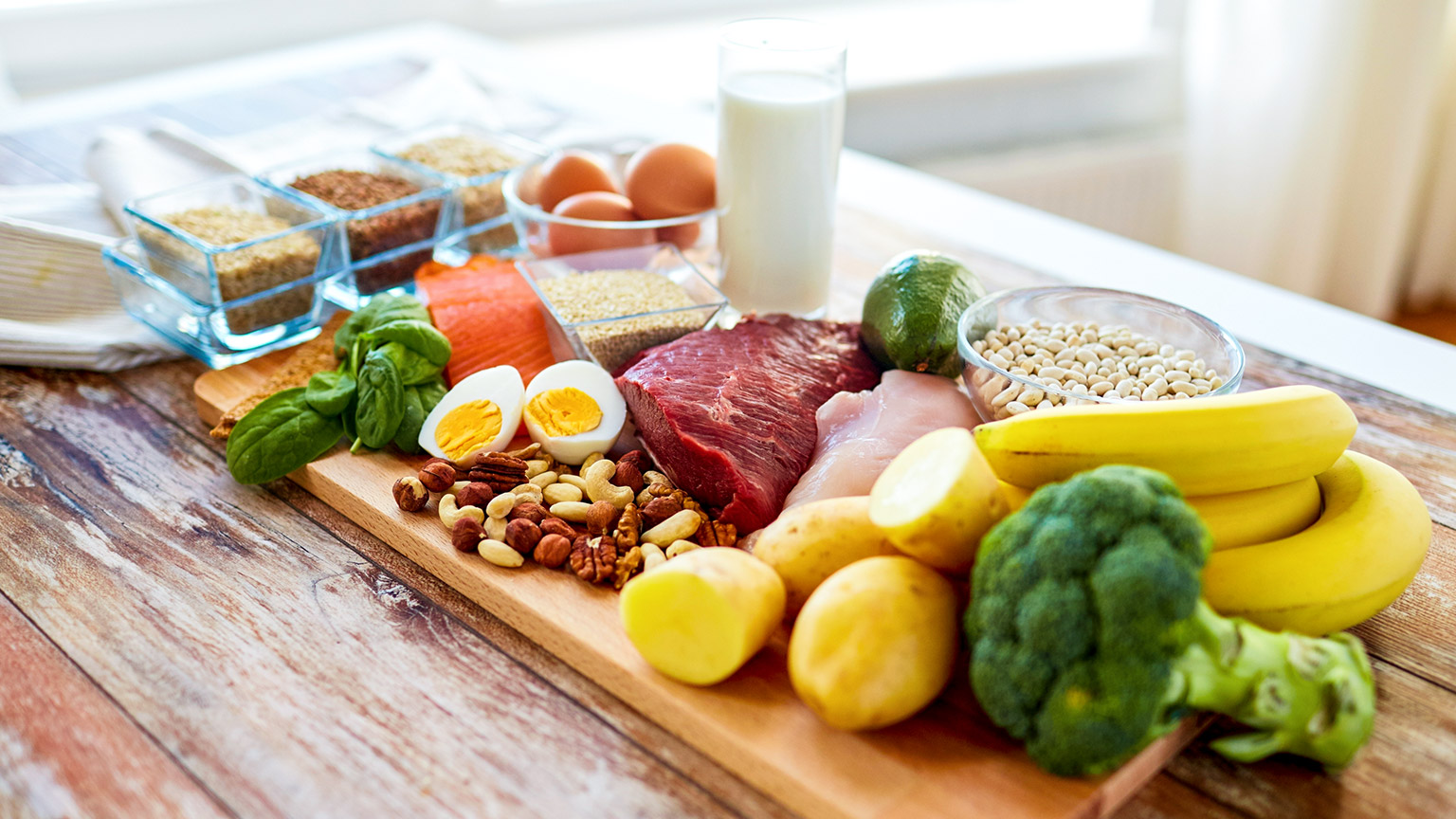The Ministry of Health (MoH) provides a collection of population-specific nutrition and physical activity guidelines. These guidelines provide the Ministry’s evidence base for nutrition and physical activity advice. The current guidelines are an important tool for anyone providing advice on nutrition and physical activity. You should bookmark the MoH Current Guidelines and Eating and Activity Guidelines for Adults to ensure you are always referring to the latest guidelines and advice.

Eating and activity guidelines for New Zealand adults
Read the Summary of Guidelines Statements and key related information and use this document to answer the questions in this topic.
The guidelines include statements about what and how much we should eat and drink.
Statement 1: Enjoy a variety of nutritious food every day
Every day enjoy:
- plenty of vegetables and fruit.
- grain foods, mostly whole grain and those naturally high in fibre.
- some milk and milk products, mostly low and reduced fat (this includes non-dairy milk alternatives with added calcium).
- some legumes (e.g. lentils, beans, chickpeas), nuts, seeds, fish/seafood, eggs, poultry (e.g. chicken), and/or red meat with fat removed.
Statement 2: Choose and/or prepare foods and drinks...
Choose and prepare food and drinks:
- with unsaturated fats instead of saturated fats.
- that are low in salt (sodium); if using salt, choose iodised salt.
- with little or no added sugar.
- that are mostly 'whole' and less processed.
Whole foods are very close to their natural state, and they have no added fat, salt or sugar. Examples include fresh vegetables and fruit, raw nuts, fish, eggs, chicken or red meat with fat removed.
Less-processed foods have undergone some processing but still retain most of their original nutrients and can be healthy food choices. Frozen or canned vegetables and fruit, canned legumes (e.g. beans and chickpeas), and fish canned in spring water are healthy, convenient and affordable options. Other healthy examples of less-processed foods include pasteurised milk and whole grains such as oats, whole wheat, and brown rice.
Highly processed foods tend to be high in kilojoules, added fat, sugar and/or salt but low in vitamins, minerals, and fibre. Highly processed foods include sweets, sugary drinks, biscuits, muesli bars, cakes, pastries, pies, instant noodles, salami, luncheon, chippies and store-bought burgers and pizzas. Avoid or have them only occasionally.
Choose foods that are low in saturated fat, sugar, and salt. Eating too many foods high in saturated fat (animal fat and coconut and palm oils), sugar and salt can harm your health. Choosing foods with unsaturated fats (from plants, excluding coconut and palm oils) rather than saturated fat can lower your risk of heart disease.

Statement 3: Make plain water your first choice over other drinks
Water is necessary for the body to survive and be healthy. Generally, tap water in New Zealand is safe to drink making it an accessible and healthy choice. Plain water contains no energy so does not contribute to weight gain. It is sometimes necessary to increase water intake such as during pregnancy and while breastfeeding.
Statement 4: If you drink alcohol, keep your intake low
Alcohol contains a lot of energy and can contribute to weight gain. There are also long-term health risks and risk of injury.
This statement includes additional guidance regarding pregnancy and breastfeeding:
- Stop drinking alcohol if you could be pregnant, are pregnant, or are trying to be pregnant.
- When breastfeeding, it is best to be alcohol-free.
Statement 5: Buy or gather, prepare, cook, and store food to ensure it is safe to eat
This statement explains how to minimise foodborne illness including food poisoning. Steps you can take to reduce the risk of food poisoning include:
- not consuming food this is past the use-by date or has been tampered with.
- washing and storing food correctly.
- reheating leftovers until steaming hot before eating.
Pregnant women are at higher risk of foodborne illness, which can also affect the baby. There are additional guidelines for food safety during pregnancy.

Statement 6: Encourage, support, and promote breastfeeding
MoH states that breastmilk is the ideal food for babies and has many benefits for both mother and child. Support helps mothers to breastfeed longer.
If you have clients who are pregnant or have young babies, do keep in mind that there are many reasons why someone may choose not to breastfeed, or cannot breastfeed. The decision is theirs alone and your role as a PT is to support your client, not judge.
Body weight statement
Alongside the eating statements, the guidelines also include a body weight statement.

Making good choices about what you eat and drink and being physically active are also important to achieve and maintain a healthy body weight.Ministry of Health
If you or a client are struggling to maintain a healthy weight, you or they should see a doctor, a dietitian, or a community health care provider.
Read
You may have further questions about the MoH guidelines and statements. Read Topical Questions and Answers in which MoH provide answers to some common questions including:
- Should carbohydrates be part of a healthy diet?
- Is a low-'carb', high-fat diet the best way to lose weight?
- Do people need to take dietary supplements?
This resource also discusses the Ministry's Activity Statements about physical activity.

Four food groups
The four food groups we focus on in New Zealand are:
- Fruit and vegetables
- Grains and cereals
- Milk and Milk products (or alternatives)
- Legumes, nuts, seeds, fish & other seafood, eggs or poultry, or red meat with the fat removed
These food groups are what make up Eating Statement 1 from the Ministry of Health Eating and Activity guidelines and are the cornerstone of a healthy diet, set up to serve the general population and their nutritional needs. The idea of breaking up types of foods into four distinct categories keeps the information easy to digest for most people, and the goal with these groups is that if you:
- eat from each group
- eat the correct number of servings for your age and sex, and
- include a variety of foods from within the group, you will likely meet your nutrient needs.
As an aside, the reason you will not find a group for “treat foods” such as lollies, chips, pastries, oils etc. is because these foods do not provide us with a lot of nutrition (micronutrients, fibre, water etc.) and over consumption of these foods can increase risks of obesity and other health issues. Enjoying these foods in moderation is what is most important for a balanced and healthy relationship with food, and in some cases, these types of foods can be useful for weight gain in individuals who struggle to put on weight due to medical conditions, or quick releasing energy for sports people.
Let’s explore the NZ nutrition foundation website to learn more about the four food groups.
Watch
In the video, you are shown an example day of eating that can help you achieve all four food groups in your diet.
Practice
Have a go at putting together an example meal plan that includes the following:
- 5 servings of vegetables
- 2 servings of fruit
- 2.5 servings of dairy
- 2 servings of legumes, nuts, seeds, fish & other seafood, eggs or poultry, and red meat with the fat removed
Share your suggestions on the forum and discuss with others about their meal ideas.
